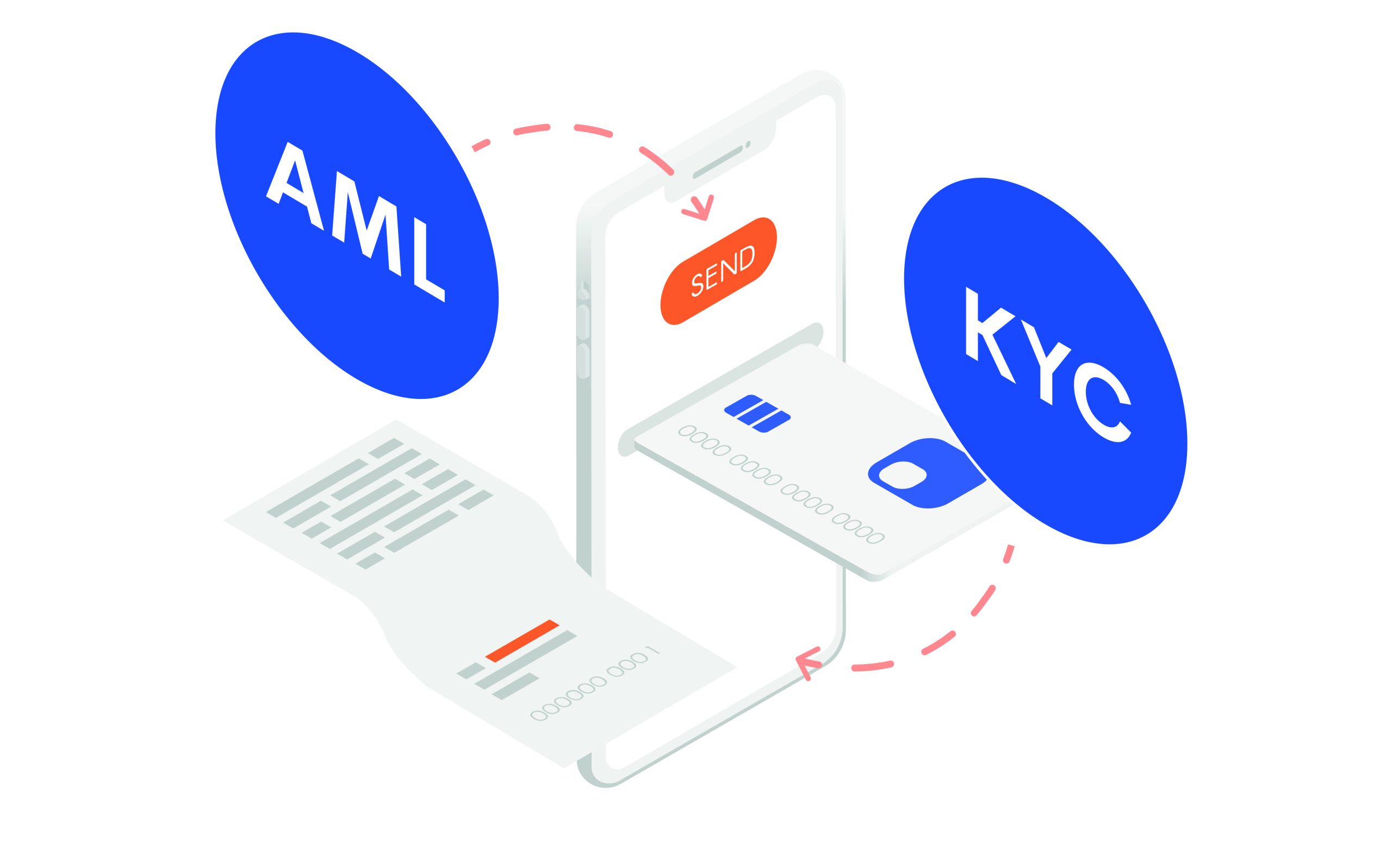Money laundering strategies can become excessively complex and covert. However, at its core, it involves integrating illicit funds into the financial system. This affects you and your organization, so you must learn about money laundering and how to detect it with AML checks.
It matters because it’s a big deal globally. Money laundering is a complex and often clandestine crime, so it is difficult to estimate it accurately. However, money laundering statistics illustrate its potentially huge impact. The United Nations Office on Drugs and Crime estimates that the amount of money laundered globally is around 2 trillion dollars U.S. annually. That equals 5% of the world’s annual gross domestic product (GDP) and five times Amazon’s annual revenue in 2020!
AML (Anti-money laundering) regulations were organized to prevent and detect such money laundering activities, to stop criminals from using the financial system to launder money, finance terrorism, or engage in other illicit activities. This article analyzes the main points of AML checks.
When are AML checks required?
AML checks, also known as customer due diligence (CDD) checks, are required when a financial institution establishes a business relationship with a new customer, conducts transactions on behalf of an existing customer, or detects suspicious activity.
AML regulations often require financial institutions, such as banks, to establish internal controls, systems, and procedures to identify and verify the identity of their customers. Additionally, they must monitor and report any suspicious transactions to the appropriate authorities. Financial institutions must also train their employees to recognize and report suspicious activities.
Who needs to do AML checks?
The specific requirements for AML checks vary by jurisdiction and depend on the nature of the business or profession. Money laundering detection rules can be challenging to comply with as every regulated entity must deal with various risk factors and acceptable thresholds depending on their:
- Business model
- Footprint
- Product range
- Customer type and other factors
Below are some examples of non-financial businesses and professions that may be subject to AML regulations and required to conduct AML checks:
- Real estate agents and brokers
- Lawyers and law firms
- Accountants and accounting firms
- Dealers in precious metals, stones, and jewels
- Casinos and other gaming establishments
- Dealers in high-value goods, such as cars and yachts
Businesses and professions that handle large amounts of cash or engage in transactions susceptible to money laundering or terrorist financing are more likely subjected to AML regulations and required to conduct AML checks.
Despite different obstacles, there are some fundamental AML rules that every compliance team should consider protecting an organization from common money laundering schemes.
Those are only initial steps. We hope these insights will benefit professionals who are designing an AML transaction monitoring program or transitioning from a manual to an automated money laundering transaction monitoring system.
What AML checks are required? Meet these 10 rules
When a financial institution establishes a business relationship with a new customer, it must conduct CDD checks to verify the customer’s identity and assess the risk of money laundering or terrorist financing. Therefore, it must monitor the customer’s transactions to ensure they are consistent with the customer’s known risk profile and the nature of the business relationship.
Rule No. 1: Detection of Structuring
Structuring transactions is a money laundering process that involves breaking transactions down into smaller chunks to circumvent reporting obligations. The AML rule that should be implemented to detect potential structuring activities taking place across your network must be capable of identifying transactions that are slightly below a reporting threshold during a specific time.
For example, if the amount mandated by your jurisdiction is $10,000, you can set the AML rule to search for a pattern in which the customer’s transactions are between $9,000 and $10,000 within 60 days.
Rule No. 2: Customer Details Updated Before a Large Transaction
When a customer modifies personally identifiable information right before making a primary outbound payment, this rule should detect it (personally identifiable information is any data that could be used to identify a specific person).
There are two main reasons for this rule to be in place.
- The first one is that these activities might indicate an account takeover. Professional money launderers might have gained access to dormant accounts and are preparing them before utilizing them.
- The second reason is that “layering” activities could occur by changing the personally identifiable information; they are attempting to hide the money’s route.
Rule No. 3: Unusual Spending Pattern
This AML rule supports the detection of account takeover or externally driven activities. It spots transactions out of the ordinary based on several criteria linked to the USUAL customer’s actions.
For example, AML rules for detecting Unusual Spending Patterns can flag suspicious spending when compared with the customer’s income level, social status, or type of occupation. You don’t need to have a single rule here as, typically, a group of AML rules could support more efficiently the identification of red flags related to Unusual Spending Patterns.
Rule No. 4: Low Buyers Diversity
The rule applies to merchants to identify when they only receive payments from a limited number of consumers on platforms that typically see multiple buyers engaging with a single seller.
This rule aims to support the detection of money laundering through collusion and circulation of funds. To ensure that AML rules under this category target the correct cluster of accounts, it is essential to give new merchants sufficient time to ramp up their business activities or apply those AML rules only to accounts older than a given period.
Rule No. 5 Disproportionate Flow-Through
This rule identifies accounts where the total amount of credits is close to the total value of debits over a short period of time. Such a rule applies to business accounts like a marketplace for goods and services. These business merchants mostly collect payments; therefore, having similar total value amounts of credits and debits makes little sense.
Rule No. 6: High-Risk Countries
AML integrates alerts against High-Risk Countries to monitor transactions in or out of nations more exposed to money laundering activities. The range of countries under this rule includes, for example, countries with a high level of banking secrecy, areas with significant financial crime exposure, or locations recognized as tax havens. Again, those are just some examples. It is also worth noting that as the geopolitical and general risk level of countries around the globe is constantly evolving, for High-Risk Countries AML rules to be effective. Therefore, it’s critical to maintain that these rules are up-to-date with the most recent intelligence.
Rule No. 7: Immediate Withdrawal to Private Wallets
This AML rule monitors transactions of accounts that make an immediate withdrawal of funds as soon as received. Criminal money can be moved through the system rapidly. Those in-and-out transactions can be red flags to identify money laundering activities.
For instance, a large amount is deposited every two or three days, and immediate withdrawals of the same amount are requested every time. Where is that money going? You should take a closer look at those transactions.
Rule No. 8 Cash Transactions
Cash is still predominantly used by criminals; hence, AML rules are designed to monitor cash-related activities for the purpose of identifying money laundering across your network. The rule must be designed to raise red flags when numerous cash deposits are identified and when those cash activities are inconsistent with the profile or expected behavior of the customer.
For instance, these AML rules can be applied to customers registered as students, homemakers, or to clients with an online business where more electronic than cash transactions are expected.
Rule No. 9: Dormant Accounts monitoring
This AML rule is triggered when new activities are identified on accounts that have been dormant for some time. The unusual activity level must be reviewed to understand if a possible account takeover has occurred and if the account is now being used illegitimately for money laundering activities.
For example, account 12345 has been inactive for the last 2 years. But over the previous 4 weeks, there have been several transactions, many of which were to high-risk jurisdictions. As a result of a dormant account being reactivated and transactions to high-risk countries, your AML system should alert you to possible suspicious activities.
Rule No. 10: Anonymizing the source of funds and fast conversions
Virtual assets (VAs) are an easy target for money launderers aiming to store proceeds of criminal activities into cryptocurrency wallets or use Virtual Assets transactions to hide the source of funds. Criminals can take money as soon as they obtain it from illicit activities and turn it into virtual assets like cryptocurrencies. They usually convert small sums of money into cryptocurrencies or vice versa, facing, in most cases, higher transactional fees imposed on them by the Crypto exchanger. You should identify as unusual when the party converts their currency into a gaming token and then withdraws it. It is a place to alert financial institutions of those frequent conversions that can be completed to disguise the source of money.

How can you apply these rules and launch your AML compliance program?
While these AML rules cover the basics, you must follow several other rules to protect your business and the financial system. However, these steps can help prevent crimes, including human trafficking and terrorist financing.
Our software development team works hard to ensure compliance with anti-money laundering regulations. We design AML-compliant, intuitive, highly accurate, and easy-to-use software to streamline transaction monitoring, recordkeeping, case management, and reporting suspicious transactions.
With Blurify, fintech companies, gaming platforms, and other regulated financial groups can stay on top of AML regulations, Know Your Customer (KYC), customer due diligence (CDD), suspicious activity reporting, and other regulatory compliance programs. Please contact us if you have any questions regarding AML-compliant software.





